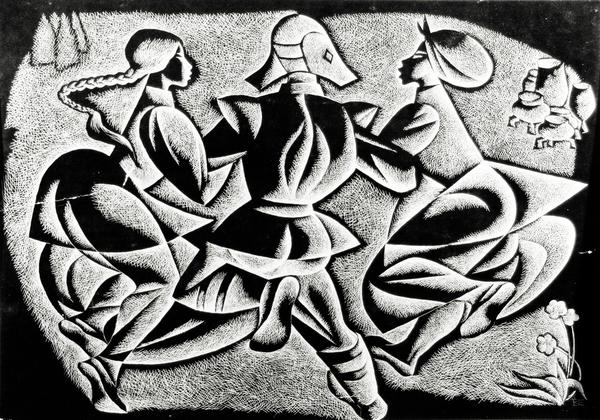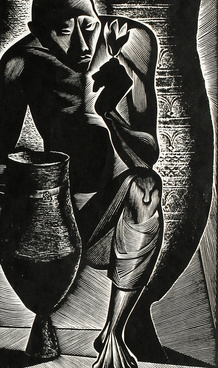In 1968, Yakut artist Vladimir Karamzin created a series of works titled ‘Ysyakh Holiday’. For his sheets, he used etching technique. In Russian, the word was derived from the French word ‘eau-forte’, which means ‘nitric acid’. As part of this technique, prints are made on a metal plate covered with a layer of etching ground.
The engraver draws directly on the metal plate with sharp, hard instruments such as a drypoint. Lines become seen on the metal plate through the action of acids and acid-resistant grounds. The brightness of colour of the lines is regulated by the depth and thickness of scratching.
Karamzin devoted his series to Ysyakh, a Yakut holiday of summer. It is celebrated on the 21st of June, the day of summer solstice. On the etchings, the artist depicted traditional phases of holiday festivities: drinking kumis (fermented mare’s milk) – national sour milk drink, round dances and sporting contests.
The artist entitled the displayed piece “Osukhai”. This is the name of an ancient folk dance performed during the Ysyakh holiday. People joined hands, went around in circles and repeated the words of a prayer following the man who started singing. That was their gratitude to the Sun for the coming summer and retreated winter.
The composition creates the impression of a round dance involving lots of people, although Karamzin depicted only three persons – two girls and a young man. By means of symmetrical and repeated lines, Vladimir Karamzin made their movements look rhythmical as if they make rounds in a dance.
The characters wear traditional holiday outfits. Women’s dress worn for this holiday was called ‘khaladay’. It was supplemented by a sleeveless jacket and silver decorations. A belt was a must for men’s outfits. Its owner’s social status, financial standing and occupation could be figured out by the quality of the belt and the way it was worn by its owner.
Folk motifs prevail in Karamzin’s creative work. He often employed scenes from national customs and holidays, as well as those from the Olonkho ancient heroic epic. The artist is included among those who laid the foundation of the Yakut graphic school.
He used different genres such as portrait, landscape, book illustrations, but his most famous artworks were black and white etchings. His works are now in the holdings of the Tretyakov Gallery in Moscow, the Board of Directors of the Exhibitions of the Artist Union of Russia, and in private collections.



